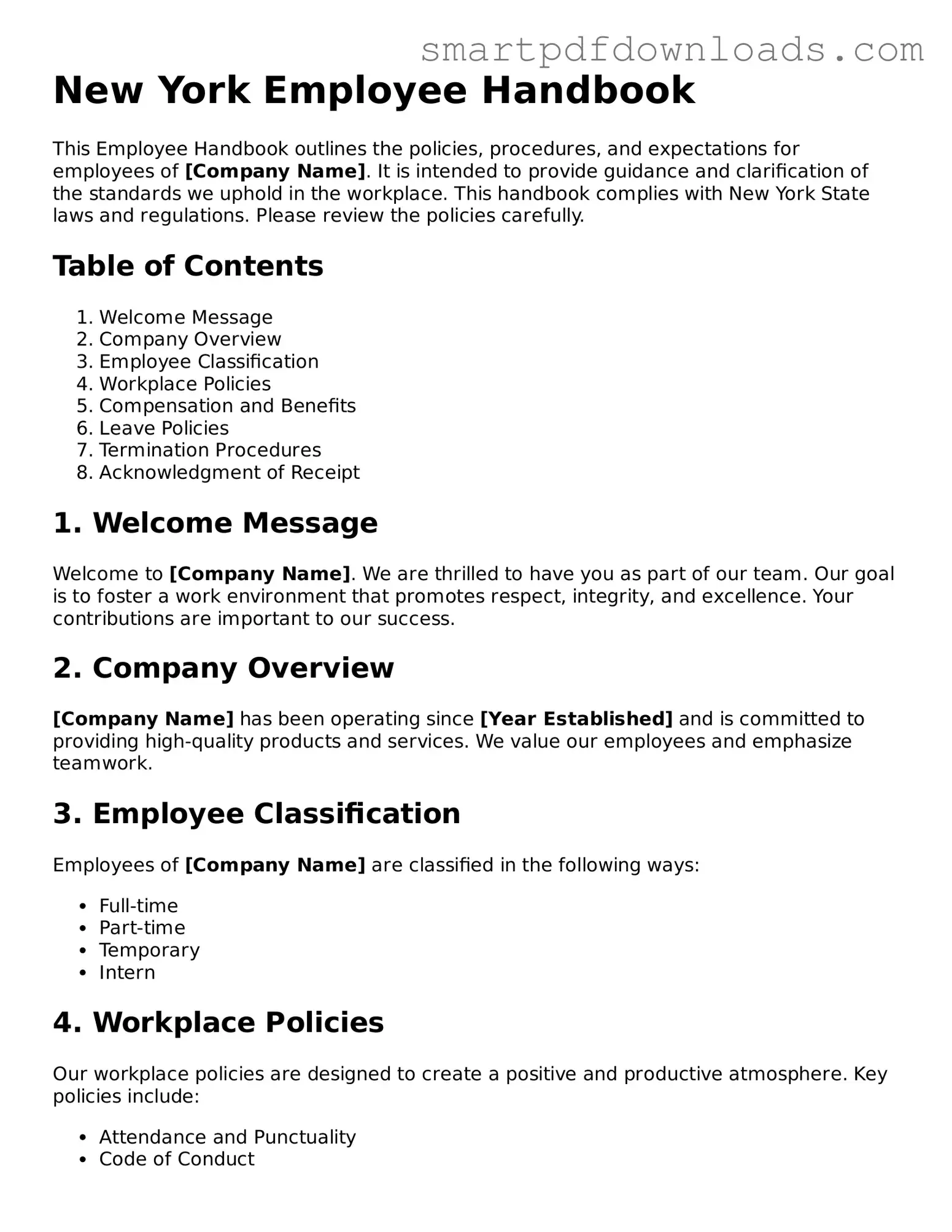New York Employee Handbook
This Employee Handbook outlines the policies, procedures, and expectations for employees of [Company Name]. It is intended to provide guidance and clarification of the standards we uphold in the workplace. This handbook complies with New York State laws and regulations. Please review the policies carefully.
Table of Contents
- Welcome Message
- Company Overview
- Employee Classification
- Workplace Policies
- Compensation and Benefits
- Leave Policies
- Termination Procedures
- Acknowledgment of Receipt
1. Welcome Message
Welcome to [Company Name]. We are thrilled to have you as part of our team. Our goal is to foster a work environment that promotes respect, integrity, and excellence. Your contributions are important to our success.
2. Company Overview
[Company Name] has been operating since [Year Established] and is committed to providing high-quality products and services. We value our employees and emphasize teamwork.
3. Employee Classification
Employees of [Company Name] are classified in the following ways:
- Full-time
- Part-time
- Temporary
- Intern
4. Workplace Policies
Our workplace policies are designed to create a positive and productive atmosphere. Key policies include:
- Attendance and Punctuality
- Code of Conduct
- Harassment Prevention
- Health and Safety
5. Compensation and Benefits
At [Company Name], we provide competitive compensation and benefits to reward your hard work. Benefit offerings include:
- Health Insurance
- Retirement Plans
- Paid Time Off
- Employee Wellness Programs
6. Leave Policies
Employees are entitled to various forms of leave, in accordance with New York State laws. These include:
- Sick Leave
- Parental Leave
- FMLA Leave
- Vacation Leave
7. Termination Procedures
If employment must end, the following procedures will be followed:
- Notice Period
- Exit Interviews
- Final Pay
8. Acknowledgment of Receipt
By signing below, you acknowledge that you have received, read, and understood the [Company Name] Employee Handbook.
Employee Name: ___________________________
Date: ______________________________
